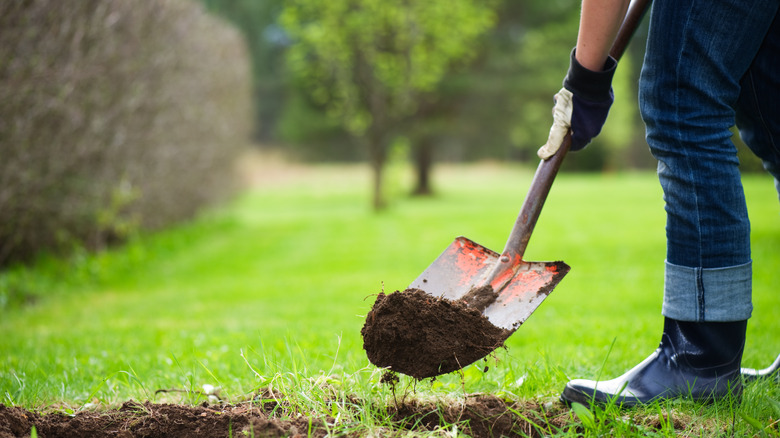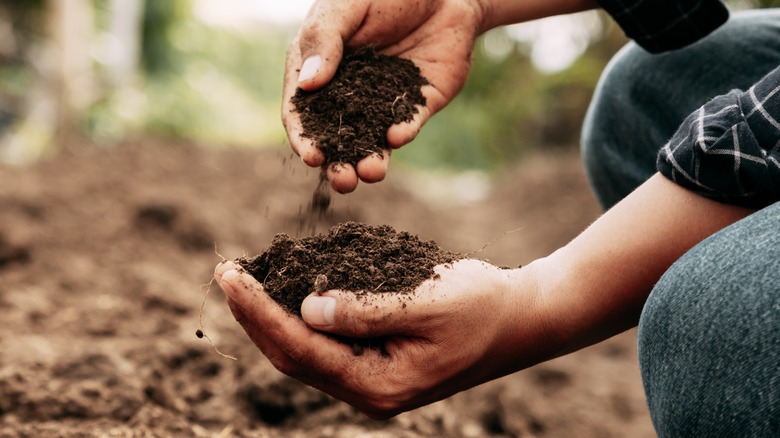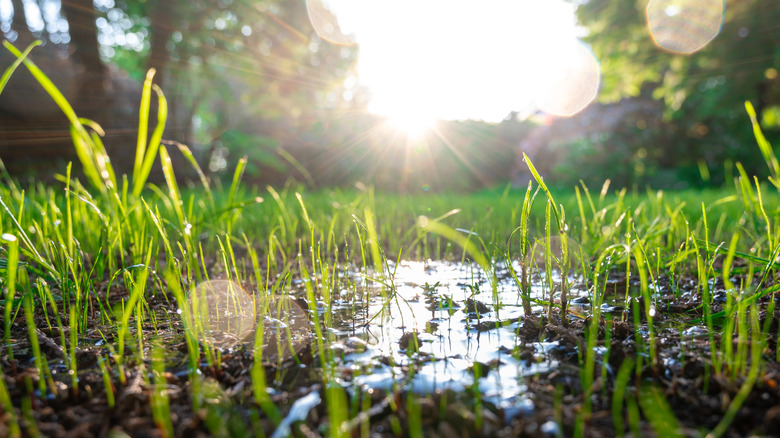Tips On Using Fill Dirt To Conceal Unwanted Holes In Your Backyard
Unwanted holes in a yard can be caused by a curious pet or wildlife looking to hide away for the winter. Unearthed dirt is a big eyesore, and these holes can be a major safety hazard depending on their severity, size, and depth. Fortunately, there's a quick and easy way to patch up these holes that require minimal supplies and yard work. And, whether you're a professional landscaper or a DIYing homeowner just trying to patch up a few holes in your yard, fill dirt is going to be your new best friend.
Fill dirt is the main component of this project, along with topsoil, grass seed, and some basic gardening tools. Topsoil is full of minerals and organic matter (carbon stored in soil by living things and released as energy) needed to help plants thrive. On the other hand, fill dirt lacks organic matter, is much denser than topsoil, and is comprised of a mixture of natural materials, including dirt, sand, clay, and rocks. While both are equally necessary, topsoil and fill dirt serve completely different purposes when it comes to plugging tedious holes throughout your yard. Fill dirt is packed into the holes to plug them, and topsoil is loosely layered overtop.
Getting the right materials
The first step of this process is to carefully inspect your yard to find each hole. Depending on who or what caused them (whether that be curious pets and children or wildlife looking for shelter over the winter), you could have many holes of all different shapes, sizes, and depths. Once they're accounted for, you'll have a much better understanding of how much fill dirt and topsoil you'll need to purchase.
Most hardware stores carry different varieties of topsoil that can be purchased in multiple different-size bags. There are also several different types of topsoil that are used for specific plants and projects. Be sure to do your research before heading to the store to ensure that you're purchasing the right kind.
As for fill dirt, you may have to do a little extra "digging" to find it for sale. And, if you're lucky, many businesses like local pool companies or landscapers often offer fill dirt in bulk for purchase or sometimes for free.
Finishing the job
Now that you have all of the materials you need, it's time to get to work. First, mow your lawn (while taking extra care not to step in any holes) to ensure that each is visible and easily accessible. Then, start shoveling your fill dirt into each hole and packing it down. Fill the entire hole to the surface to create a solid base layer.
Next, you'll want to evenly and generously apply a layer of topsoil to each patched-up hole. Unlike the fill dirt, you'll want this layer to be breathable. Use your hands or a rake to loosen it up as you go along.
Use a garden hose or sprinkler to moisten each section of topsoil and give it a few hours to soak in. Then, plant grass seed in each spot and water it daily for the best results. Within a couple of weeks, you'll start seeing new growth. Within a few months, you won't even be able to tell where the holes were in the first place.


